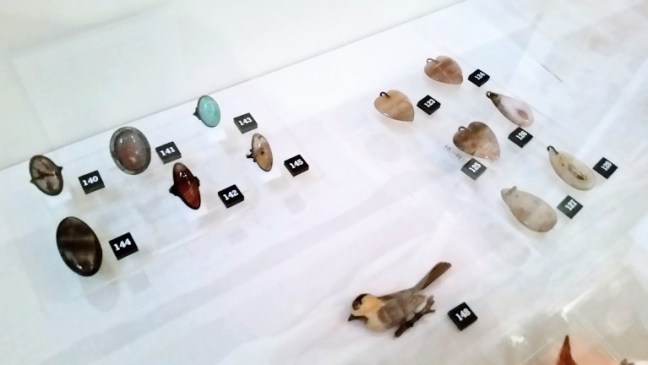
Another fulfilling year is about to come to a close. JANM presented many significant exhibitions and interesting events in 2018—here’s a look back at some of the highlights.

In January Contested Histories: Art and Artifacts from the Allen Hendershott Eaton Collection showcased a collection of arts and crafts Japanese Americans made while incarcerated at American concentration camps during World War II, along with a large number of photographs taken in the camps. Saved from the auction block through the action of Japanese American community leaders throughout the country, the collection serves as a testament to the creative spirit enduring in even the darkest of times. A pop-up version of this is now touring the country. Viewers are asked to contribute any information they have about the objects and the people depicted in the photos.

The Transpacific Borderlands: The Art of Japanese Diaspora in Lima, Los Angeles, Mexico City, and São Paulo exhibition, which opened in 2017 but continued into the first two months of 2018, highlighted the experiences of artists of Japanese ancestry born, raised, or living in either Latin America or predominantly Latin American neighborhoods of Southern California. The show examined the complexities surrounding identity and how the concepts of homeland and cosmopolitanism inform the creativity and aesthetics of this hybrid culture. Continuing on the topic of cultural identity, JANM opened hapa.me– 15 years of the hapa project in April. In this exhibition by artist Kip Fulbeck, photographs from his 2006 exhibition Kip Fulbeck: Part Asian, 100% Hapa were paired with new portraiture of the same individuals. The subjects of the photographs identify as hapa—of mixed Asian/Pacific Islander descent. The photographs were accompanied by each subject’s responses to the question, “What are you?”

In August, to mark the thirtieth anniversary of its signing, two original pages of the Civil Liberties Act of 1988, on loan from the National Archives, were displayed along with the pen that President Ronald Reagan used to sign it. This Act formally apologized for the incarceration of Japanese Americans during World War II and paid monetary reparations to

In the autumn, JANM opened Kaiju vs Heroes: Mark Nagata’s Journey through the World of Japanese Toys and Gambatte!

In addition to exhibitions, JANM hosted several public programs throughout 2018 that were a hit with the community. Highlights included artist Shinpei Takeda’s talk about his work in Transpacific Borderlands, a film screening of the original Godzilla movie, and, of course, the Natsumatsuri Family Festival. The summer festival featured fun for all ages, including crafts, music, tea ceremonies, and taiko drums. More recently, JAMN hosted a staged reading of Velina Hasu Houston’s play Little Women (A Multicultural Transposition). This re-imagination of Alcott’s classic novel presented the story of four Japanese American sisters living in post-war Los Angeles.

JANM members receive benefits at many of our events and exhibitions. These include invitations to exhibition openings and reduced-price tickets to events. Membership at the museum also includes invitations to Members’Only Learning at Lunch sessions at which JANM Collection Unit staff talk about recently acquired objects and other treasures we hold. Members also receive priority seating and access to express lines at family festivals. Think about becoming a member today!

Here’s to a great year. We hope to see you for JANM’s Oshogatsu Family Festival on January 6, 2019, as we celebrate the New Year and the Year of Boar with crafts, food, cultural activities, and performances! The NewYear, or Oshogatsu, is one of Japan’s most popular and important holidays. During this celebration, people in Japan spend time with friends and relatives and enjoy special holiday dishes. We will be offering lucky
See you in 2019!










 Iraq & Syria, a traveling exhibition of the Arab American National Museum, is on view at JANM until August 5, 2018. Having previously created
Iraq & Syria, a traveling exhibition of the Arab American National Museum, is on view at JANM until August 5, 2018. Having previously created 



